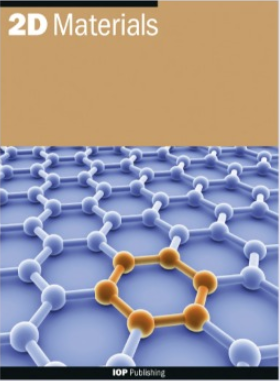基于强粘性聚合物的新型扭曲范德华制造方法
IF 4.3
3区 材料科学
Q2 MATERIALS SCIENCE, MULTIDISCIPLINARY
引用次数: 0
摘要
在扭曲的双层石墨烯中观察到的新兴量子相,引发了对石墨烯以外的范德华(vdW)材料的大量研究。目前的大多数扭曲实验都使用一种名为聚丙烯碳酸酯(PPC)的聚合物进行所谓的撕叠法。然而,尽管目前的 PPC 撕叠法具有明显优势,但也存在技术限制,主要是使用这种基于 PPC 的方法可研究的 vdW 材料数量有限。这一技术瓶颈阻碍了这一令人兴奋的领域的进一步发展,使其局限于少数可用的 vdW 样品。为了克服这一挑战并促进未来的发展,我们开发了一种使用强粘合性聚己内酯的新型撕叠方法。我们的技术具有类似的角度精度,可以在没有封盖层的情况下进行制造,便于进行表面分析,并确保固有的洁净界面和低工作温度。更重要的是,该技术可应用于许多其他 vdW 材料,而基于 PPC 的方法仍无法实现这些材料。我们展示了使用多种 vdW 材料制造扭曲同源结构的结果--从两种研究得很好的 vdW 材料(石墨烯和 MoS2)到首次展示的其他 vdW 材料(NbSe2、NiPS3 和 Fe3GeTe2)。因此,我们的新技术将有助于把摩尔纹物理学扩展到少数选定的 vdW 材料之外,并开启更多令人兴奋的发展。本文章由计算机程序翻译,如有差异,请以英文原文为准。
New twisted van der Waals fabrication method based on strongly adhesive polymer
Observations of emergent quantum phases in twisted bilayer graphene prompted a flurry of activities in van der Waals (vdW) materials beyond graphene. Most current twisted experiments use a so-called tear-and-stack method using a polymer called polypropylene carbonate (PPC). However, despite the clear advantage of the current PPC tear-and-stack method, there are also technical limitations, mainly a limited number of vdW materials that can be studied using this PPC-based method. This technical bottleneck has been preventing further development of the exciting field beyond a few available vdW samples. To overcome this challenge and facilitate future expansion, we developed a new tear-and-stack method using a strongly adhesive polycaprolactone. With similar angular accuracy, our technology allows fabrication without a capping layer, facilitating surface analysis and ensuring inherently clean interfaces and low operating temperatures. More importantly, it can be applied to many other vdW materials that have remained inaccessible with the PPC-based method. We present our results on twist homostructures made with a wide choice of vdW materials—from two well-studied vdW materials (graphene and MoS2) to the first-ever demonstrations of other vdW materials (NbSe2, NiPS3, and Fe3GeTe2). Therefore, our new technique will help expand moiré physics beyond few selected vdW materials and open up more exciting developments.
求助全文
通过发布文献求助,成功后即可免费获取论文全文。
去求助
来源期刊

2D Materials
MATERIALS SCIENCE, MULTIDISCIPLINARY-
CiteScore
10.70
自引率
5.50%
发文量
138
审稿时长
1.5 months
期刊介绍:
2D Materials is a multidisciplinary, electronic-only journal devoted to publishing fundamental and applied research of the highest quality and impact covering all aspects of graphene and related two-dimensional materials.
 求助内容:
求助内容: 应助结果提醒方式:
应助结果提醒方式:


